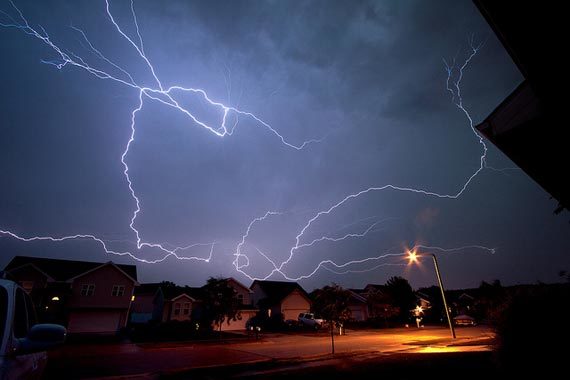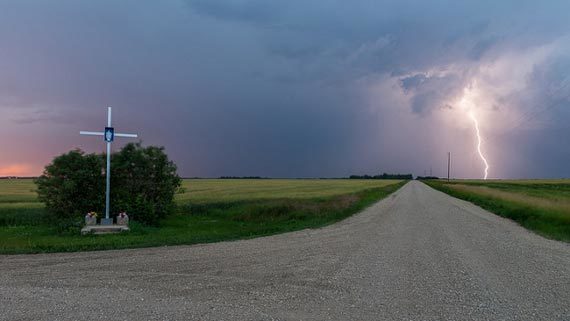Lightning photography is self-explanatory: photographing lightning. Because lightning is a very unpredictable force of nature, the actual process of photographing lightning presents unique challenges to photographers. It is, however, possible to be an outstanding lightning photographer if you are equipped with the necessary skills. Below are 8 useful tips that will help you capture stunning lightning shots:

Photo by Nick Olejniczak; ISO 200, f/14, 2-second exposure.
1. Use a tripod or steady surface.
This is one of the most important tips to consider. Although a tripod works best, any steady surface will do the trick. Because lightning is accompanied by storms, it is obvious why a tripod or steady surface is important.
2. Consider long shutter times.
Lightning is unpredictable; it is very hard to make decent captures tripping the shutter every time you see a flash. For this reason, you should consider investing in a good camera with slow shutter speeds, preferably 30 seconds.
3. Set the horizon.
Most lightning action takes place in the sky. For this reason, the field of view must be set from the horizon up or skewed to the sky. Depending on how close lightning strikes, you will be including more blank sky than normal. You shouldn’t worry about this, because the sky will be more exciting when lightning strikes.

Photo by Jeff Wallace; ISO 250, f/10, 6-second exposure.
4. Include something interesting.
Although the main focus should be on the sky, you shouldn’t forget to include something interesting in the frame to give your photo relevance and/or perspective. For instance, you can choose to include buildings or vegetation or other things that show how big a storm is.
5. Use manual focus.
It is better to use manual focus when taking lightning photos, because lightning is best seen at night when there is enough darkness. Instead of letting your camera hunt for focus automatically when taking every new shot, get a suitable manual focus and leave your camera there.
6. Set shutter speed and aperture manually.
If you are using a camera with the ability to set shutter speed, pick a suitable shutter time like mentioned above and choose a fairly wide aperture. The depth of field should be shallow unless you have nearby objects you would like to include.
7. Consider using stacking software.
This tip is useful if you succeed in capturing steady shots one after the other. You can use stacking software to combine multiple images into one. Most spectacular lighting photos are a a result of stacking, because a single strike usually captures faint cloud action or a single lightning strike.
8. Exercise patience.
This is the last most important tip to consider about lightning photography in this list. Because lightning is unpredictable, you have to be patient. You also need to prepare yourself for multiple camera adjustments in an effort to capture the best shot.
About the Author:
Swee Shiong Chong writes for SG East Photography, a photography blog on techniques and equipment that is used in creating all types of photography from around the world.
Like This Article?
Don't Miss The Next One!
Join over 100,000 photographers of all experience levels who receive our free photography tips and articles to stay current:






One assumes that the roadside memorial is for the last photographer who stood out in the open, next to a metal tripod and camera, during a lightning storm.
9. NEVER FORGET SAFETY. Lightning kills.
I actually prefer to use a smaller aperture for lightning shot. Not only is it better when you have a good foreground or landscape in the shot, but you get all the little branches from the Lightning that add interest. Also, and this is personal preference, I don’t care much for stacked or overshopped lightning shots. They lack realism and just look ridiculous. While it shows Photoshop skills (and only very basic ones at that) it doesn’t allow your skill as a photographer to shine. Getting a good, realistic shot requires patience, and skills in timing and composition that are much more impressive. Of course, that is my opinion.